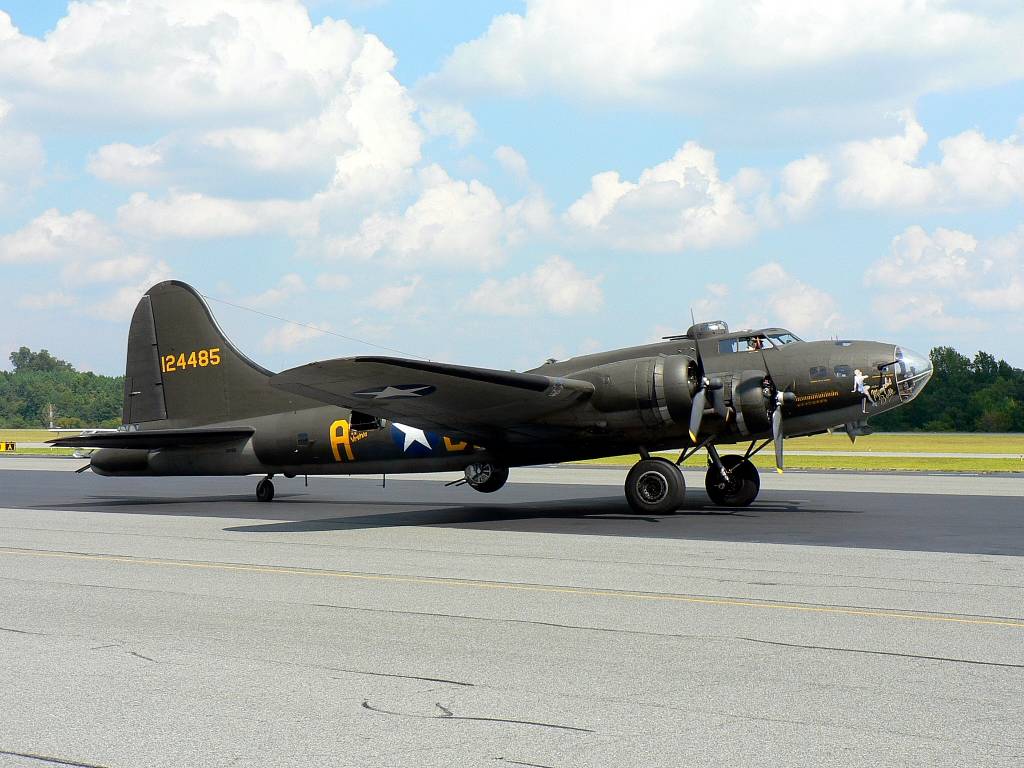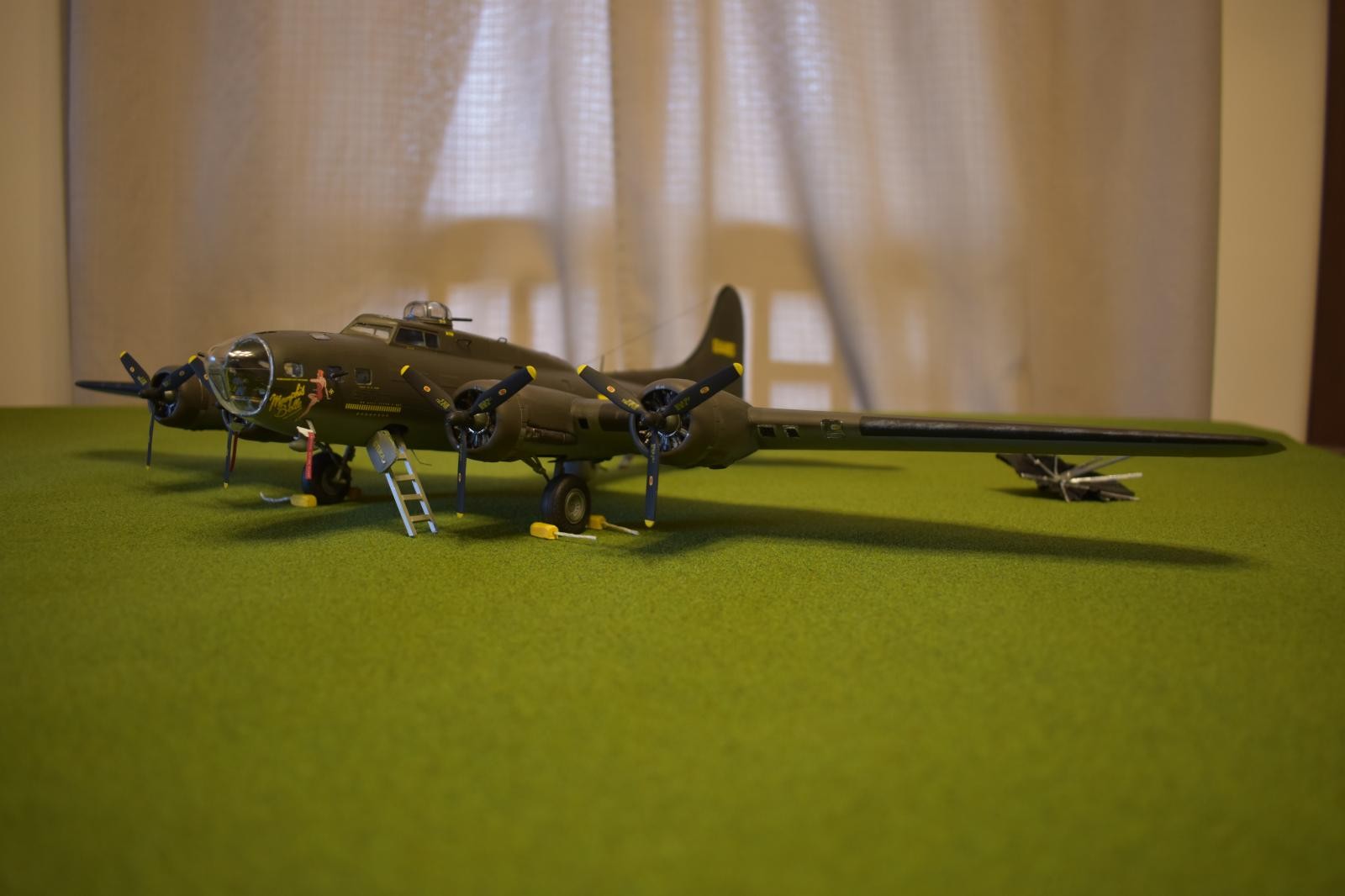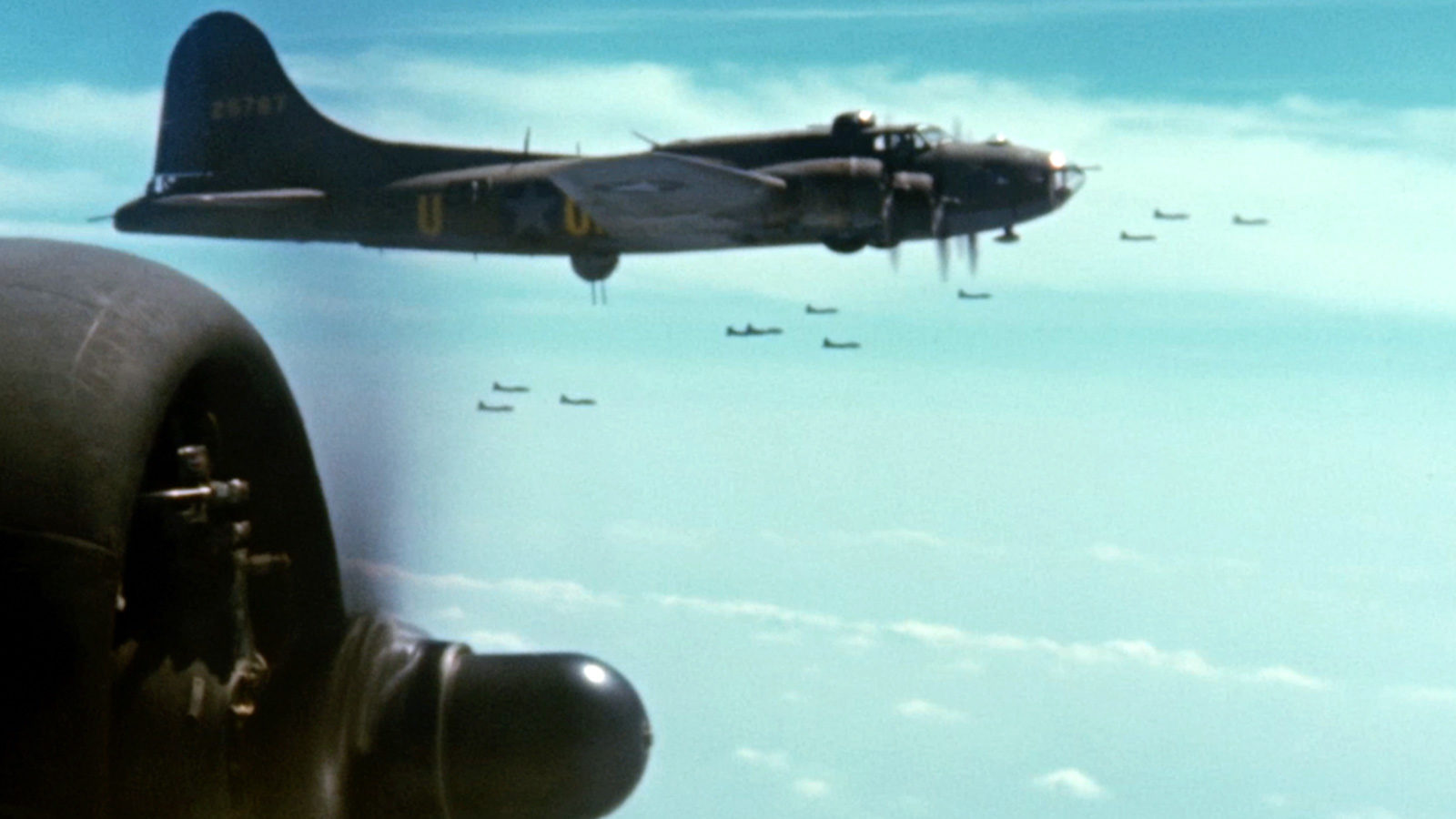Memphis Belle Aircraft - Boeing B-17F-10-BO Flying Fortress, AAF Ser. No. 41-24485, Memphis Belle, 324th Bomb Squadron, 91st Bomb Group, 1943. June 9
The Memphis Belle is a World War II Boeing B-17F flying fortress that inspired two movies: 1944's the documentary Memphis Belle: A Flying Fortress and the 1990 Hollywood movie "Memphis Belle". It was one of the first B-17 heavy bombers of the United States Army Air Forces, flying 25 combat missions, after which the aircrew and bomber returned to the United States to sell war bonds.
Memphis Belle Aircraft

In 2005 The Memphis Belle has begun restoration at the National Museum of the United States Air Force at Wright-Patterson Airfield in Dayton, Ohio, where it has been on display since 2018. May.
Photos Of The Fully Restored Memphis Belle Wwii Bomber
In 1990 the B-17 used in the feature film is at the National Warplane Museum in Geseo, New York.
The Memphis Belle team left to right: Tech. Sgt. Harold P. Loch, Gray Bay, Wis., top turret gunner; Staff Sgt. Cecil H. Scott of Altoona, Pa., turret gunner; Tech. Sgt. Robert J, Hanson of Walla Walla, Wash., radio operator; Capt. James A. Verinis, New Hav, Conn., co-pilot; Capt. Robert K. Morgan of Asheville, N.C., pilot; Capt. Charles B. Leighton, Lansing, Mich., navigator; Staff Sgt. John P. Quinlan of Yonkers, N. Y., tail gunner; Staff Sgt. Kazimier A. Nastal of Detroit, Mich., Belt Rifleman; Capt. Vinct B. Evans of Hudson, Texas, bombardier and Staff Sgt. Clarce E. Winchell of Oak Park, Ill., belt shooter.
The crew returned from the 25th operational mission. All were awarded the Distinguished Flying Cross and the Air Medal.
Memphis Belle, B-17F-10-BO built by Boeing, manufacturer serial number 3170, USAAC serial number 41-24485, entered the USAAF list in 1942. July 15
Hk Models B 17f Flying Fortress 'memphis Belle' (1:32)
In 1942 September 30 she was based in Prestwick, Scotland on 1 October. moved to temporary base RAF Kimbolton and finally to permanent base RAF Bassingbourn, Gland on 14 October.
Both sides of the fuselage bore the unit and aircraft identification markings of the 324th Bomb Squadron (Heavy) with the squadron code "DF" and individual aircraft with the letter "A".
Captain Robert K. Morgan's crew flew 25 combat missions with the 324th Bomb Squadron; all but four were Memphis Belles. The bomber's 25 combat missions, during which the aircrew shot down eight German aircraft, included:

In 1943 June 8 The Memphis Belle, with the crew of the Eighth Air Force, which flew into combat, took off in 1943. June 8; they were led by Captain Morgan on a tour of 31 City War Bonds. Morgan's original co-pilot was Captain James A. Verinis, who himself flew the Memphis Belle on one mission. Verinis was promoted to commander of the second B-17 during the last 16 missions and ended his tour on May 13. He rejoined Morgan's crew on his return to the US as co-pilot.
Academy 1/72 B 17f Memphis Belle 12495
303rd Bomb Group B-17 Hell's Angels (41-24577) 1943 May 13 completed 25 combat missions, becoming the first to accomplish the feat, one week before the Memphis Belle.
The B-17 was named after pilot Robert K Morgan's beloved Margaret Polk of Memphis, Tennessee. Morgan originally intended to name the bomber Little, which was the name of his pet Polk. After Morgan and co-pilot Jim Verinis watched the feature film Lady for a Night, in which the main character owns a riverboat, the Memphis Belle, he suggested the name to his aircrew.
Morgan contacted George Petty at the Esquire magazine office and asked him to add a drawing that Petty had submitted from the magazine in 1941 to the title. in April
91 Group artist Corporal Tony Starcer copied and applied Little Girl's artwork to both sides of the forward fuselage, depicting her bathing suit in blue on the rear of the aircraft and red on the starboard side. The nose art later included 25 bomb figures, one for each mission waypoint, and eight Nazi swastikas, one for each German plane the crew was said to have shot down. At the end of the trip, the station and crew names were under the bomber's station windows.
The B 17 'memphis Belle' Is Being Restored At The Air Force Museum
In his memoir, Morgan said he flew the Memphis Belle between the Buncombe County Courthouse and City Hall in his hometown of Asheville, North Carolina, during his public tour. Morgan wrote that after leaving the local airport, he decided to fly into town and told his co-pilot, Captain Verini, "I think we'll just go over town and say goodbye to them for a bit." Morgan turned the bomber onto Patton Avenue, the main street, toward downtown Asheville. Seeing the courthouse and city hall dead ahead (two tall buildings only about 50 feet (20 m) apart), he dropped his left wing to a 60-degree angle and flew between the structures. He wrote that an AAF weather unit was stationed at City Hall, whose commander allegedly immediately complained to Ptagon, but was informed by a supervisor that "Major Morgan was authorized by Geral Hry 'Hap' Arnold."
In 1943 On 23 December, following her combat assignment to the Eighth Air Force (8 AF), the 91st Bombardmt Group (91 BG) in Europe and the subsequent State War Bond Command, Memphis Belle was assigned to MacDill Field, Florida. It became a training aircraft for B-17 crews and ground crews remaining at MacDill Field until Victory in Europe Day (VE Day). After VE Day, the aircraft was flown to Altus AAF, Oklahoma for storage and restoration.
This chapter does not cite any sources. Please help improve this section by adding citations to reliable sources. Unaccepted material may be challenged and removed. (March 2018) (See how and for whom to remove this template message)

After the war, the Memphis Belle was rescued by Memphis Mayor Walter Chandler from Altus Army Airfield, where it had been sent since 1945. August 1 He arranged for the city of Memphis to purchase a B-17 for $350 (respectively). to $5,268 in 2021).
Restored Wwii Bomber Memphis Belle Makes Public Debut
He was flown to Memphis in 1946. July and was held until 1949. mid-afternoon when the bomber was on display at the National Guard Armory near the city fair. It sat outside in the 1980s and slowly deteriorated due to weather and vandalism. Souvir hunters removed almost all internal components. In the end, there were no instruments left in the cockpit, and nearly every removable part of the B-17's interior was smashed, often severing wires and control cables.
In the early 1970s, another mayor donated the historic B-17 back to the United States Air Force, but they allowed it to remain in Memphis if it was preserved. Organized locally by the Memphis Belle Memorial Association, Inc. (MBMA), the bomber was moved to Mud Island on the Mississippi River in 1987 to be displayed in a new large tarp pavilion.
But he was against the elements and prone to the weather. Pigeons also nested inside the tarpaulin, and their droppings had to be constantly removed from the bomber. Dissatisfaction with the site led to a new museum in Shelby County. in 2003 In the summer, the Memphis Belle was dismantled and taken to the former Memphis Naval Air Station in Millington, TN. However, in 2004 in September, the National Museum of the United States Air Force, apparently fed up with the city's efforts to preserve the B-17, announced it wanted to return it for restoration and museum display. at Wright-Patterson Airfield near Dayton, Ohio. K Axmaker, Jr. documentary Memphis Belle - The Final Chapter in Memphis, which focuses on the history of the Belle in Memphis, highlighting the final days and the volunteers who worked to preserve one of the world's most famous airplanes. and another Memphis icon that will soon be gone.
In 2005 August 30 MBMA announced that a consultant they had hired determined that MBMA would not be able to raise much money to restore the Belle and otherwise meet Air Force requirements to maintain the bomber. They announced plans to return the B-17 to the National Museum of the United States Air Force at Wright-Patterson Airfield near Dayton, Ohio, after it was last displayed in 2005. September 30-October 2 at an air show in Millington, Tennessee. in 2005 arrived safely at the museum in mid-October and was placed in one of the museum's restoration hangars.
Movie Memphis Belle” To Fly Baltimore Skies
The restoration of the Memphis Belle has been one of the museum's priorities. In the Museum Foundation's Frids Journal, USAF (Ret) Director Maj. Geralt Charles D. Metcalf said it could take 8 to 10 years to fully restore the bomber.
By the spring of 2009, much of the preparatory work had been completed, but the fuselage and wings were still being dismantled.
When the paint was removed from the stern hull, there were hundreds of names and personal messages

Mcdonnell douglas aircraft for sale, mcdonnell douglas aircraft designed, mcdonnell miller, dr mcdonnell, mcdonnell douglas aircraft company, mcdonnell douglas aircraft since 1920, mcdonnell aircraft company, mcdonnell douglas commercial aircraft, mcdonnell douglas aircraft list, mcdonnell, mcdonnell douglas aircraft, mcdonnell aircraft corporation
0 Comments